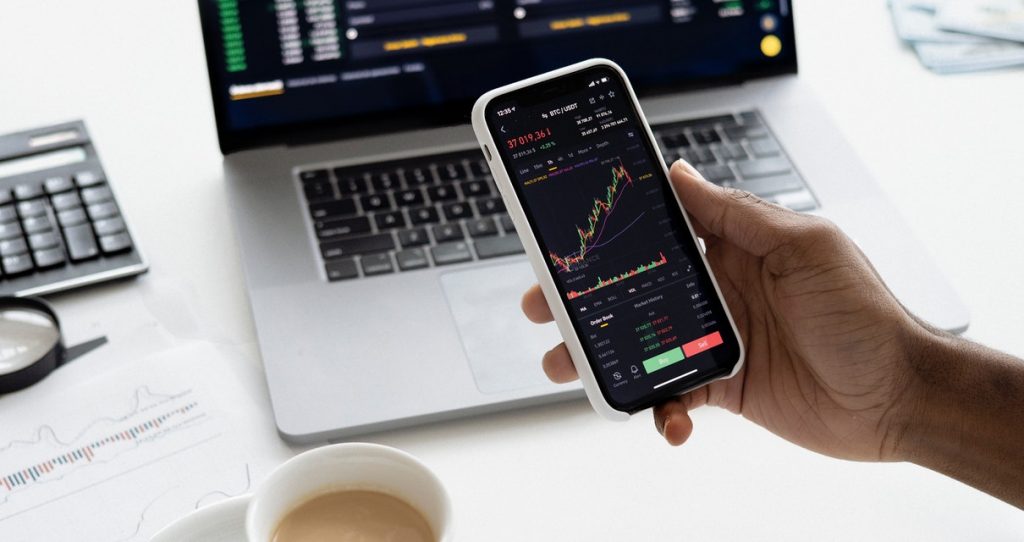Risk-on and risk-off trading conditions are fundamental elements of every financial market. They showcase the current market sentiment; in other words, it reveals the attitude and emotion of traders and investors toward particular markets or securities.
The price of financial instruments may rise and fall due to economic factors, geopolitics, interest rate adjustments, inflation reports, and industry news, such as company announcements, earnings reports, etc. As a result, market participants change their behavior to limit risk exposure and protect their capital.
Depending on the current market sentiment, their risk tolerance can be high or low, affecting their trading or investment activity.
When risk tolerance is high, market participants are willing to risk more capital for a chance to capture higher returns. When risk tolerance is low, they prefer sticking with low-risk investments.
These two types of risk environments refer to risk-on and risk-off trading conditions. Let’s explore them in more detail before learning how to trade in risk-on and risk-off situations.
What does risk-on mean in trading?

Risk-on refers to positive or bullish market sentiment and high-risk tolerance. It refers to a trading environment where investors look to buy riskier assets to yield higher potential returns. Since they are in a buying mood, the markets are dominated by greed. In a risk-on environment, investors have a positive outlook on the economy as a whole.
Focused on their ROI, they are willing to take more considerable risks because they are optimistic about the overall outlook on the markets and the economy.
This investor confidence is because of global central bank statements, earnings reports, political events, and other relevant industry news that influence the markets and increase perceptions of a more favorable risk to reward ratio.
Since trading volumes increase and boost market liquidity, bid-ask spreads narrow. That means that buying and selling assets to get in and out of positions becomes easier and more cost-effective and opens up more profitable opportunities, especially in highly liquid markets.
The risk-on market sentiment is more common than its risk-off counterpart. More precisely, risk-on periods tend to last longer and dominate market movements most of the time.
What is a risk-off environment in trading?

A risk-off trading environment is a direct opposite of a risk-on environment. It refers to negative or bearish market sentiment and low-risk tolerance.
When the markets turn bearish, and the overall outlook on the economy is gloomy, traders and investors are in a selling mood, turning to low-risk, low-yield investments (the so-called safe-haven investments) to capture sure-shot returns.
They are risk-averse, meaning they are unwilling to engage in high-risk investments but instead want to protect their capital. In such a risk-off environment, the markets are dominated by fear.
What causes this fear and creates a risk-off environment? Extreme market conditions influenced by widespread downgrades in earnings reports, a negative economic outlook, uncertain central bank policies, natural disasters, and other external factors.
When those events happen, it typically surprises the financial markets because they’re not very common. That makes the prices of the affected financial instrument move significantly.
During a risk-off period, market liquidity decreases, and bid-ask spreads widen. That means buying and selling assets to get in and out of positions becomes more challenging and expensive (even in less liquid markets), especially since price volatility is higher. An increased selling mood eventually sends the prices lower.
Risk-on vs. risk-off assets

As the term suggests, risk-on assets are volatile, high-risk assets. However, they are also high-yield assets that offer an opportunity to capture higher potential returns.
Risk-on assets include:
- Stocks;
- Indices;
- High-yield or junk bonds (corporate debt securities);
- Major high-yield commodity currencies like CAD, AUD, and NZD;
- Exotic high-yield commodity currencies like ZAR, NOK, and TRY;
- Commodities like crude oil, copper, and aluminum.
All of these assets generally outperform their risk-off counterparts. Investing in them at the right time, and controlling the risk with the correct trade orders, can help you generate significant profits in the market.
In contrast, risk-off assets are low-risk, low-yield assets that traders and investors turn to when looking to preserve their capital, which is why they are referred to as safe-haven assets.
Risk-off assets include:
- Bonds like U.S. Treasury bonds, U.S. AAA corporate bonds, and German Bunds;
- Low-interest currencies like CHF, JPY, and USD;
- Defensive stocks like utilities and consumer goods companies;
- Long volatility assets like VIX;
- Gold.
Cash is another safe-haven asset that you can trade during a risk-off period; however, it doesn’t offer any significant return or yield, not to mention that inflation impacts it negatively.
All the other safe-haven assets can help you generate returns, but they may not be particularly excessive. Still, they should be an essential part of your trading strategy when unforeseen circumstances turn the markets bearish. They can limit your risk exposure and protect your portfolio.
How to trade during a risk-on market sentiment

In a Risk-on trading environment, it is most helpful to take long positions in risk-on assets, thus opening up more opportunities for higher potential returns. For example, if you are trading in futures markets, you may want to buy positions in Indices such as the E-Mini S&P 500 (ES), E-Mini Dow Jones (YM), E-Mini Nasdaq 100 (NQ).
Conversely, you can go short in risk-off assets that may not bring you exceptionally high yields when risk tolerance is high. The best financial instruments to consider when going short are bonds, USD, JPY, and CHF.
Of course, this is not set in stone, but it’s a proven strategy for locking in more potential profits. However, since risk-on assets are risky, your potential losses are higher as well.
That’s why your trading strategy should include sound risk management principles that will help you control the risk and ensure your profits are higher than your losses.
How to trade during a risk-off market sentiment

A risk-off sentiment calls for a strategy that’s opposite to the one above. It involves taking long positions on safe-haven assets while taking short positions on certain risk-on assets, such as stocks, commodities, and non-commodity currencies.
Many traders and investors often make what is known in the financial world as ‘carry’ trades to grab more potential returns on multiple low-risk trades during a risk-off sentiment.
A carry trade is a trading strategy that involves borrowing a low-risk (risk-off) asset at a low-interest rate before buying a high-risk (risk-on) asset in another market.
This strategy is typically based on safe-haven currencies and high-yield currencies. It can be quite profitable if a particular high-yield currency’s additional interest doesn’t become greater than that currency’s total depreciation amount.
If you’re just getting started with trading, we recommend staying away from carry trades. Although they offer great opportunities for turning a profit, they can be extremely risky.
For instance, the implicit exchange risk or sharp declines in prices can lead to significant losses. That’s why carry trades are best suited for professional traders and investors with a high-risk tolerance and large trading capital.
Conclusion
Risk-on and risk-off trading conditions have been fundamental elements of market sentiment for decades. They determine risk tolerance and impact market participants’ trading and investment decisions, thus affecting demand, liquidity, and price movements.
Now, the correlation between risk-on and risk-off assets has been steady through various market conditions. But, with economies and financial markets becoming more interconnected daily, we can’t help but wonder if that correlation will remain unchanged.
Depending on their sentiment, market participants will undoubtedly continue to trade and invest in the risk-on and risk-off assets discussed above. Still, new asset classes may pop up on the horizon, perhaps even sooner than anyone imagines.





